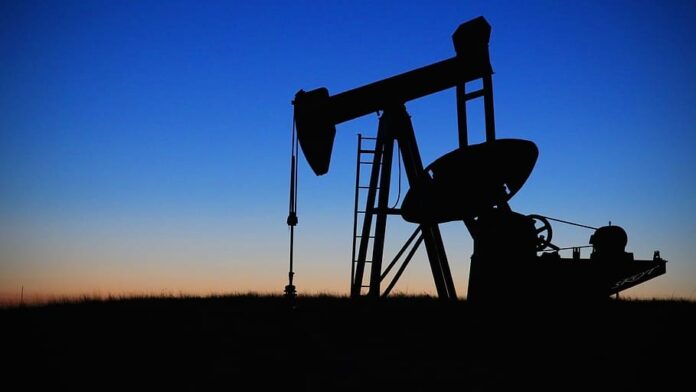TOKYO: Oil prices pared early gains on Monday, off more than three-week highs reached earlier in the session as a powerful hurricane ploughing through the Gulf of Mexico forced shutdowns and evacuations of hundreds of offshore oil platforms.
US gasoline prices rose more than 3% as power outages added to refinery closures on the Gulf coast.
Brent was up 27 cents or 0.4% at $72.97 a barrel by 0337 GMT. It rose more than 11% last week in anticipation of disruptions to oil production from Ida.
US oil turned negative and was down by 6 cents at $68.68 a barrel, having jumped a little over 10% over last week.
The benchmarks hit highs not seen since early August, $73.69 and $69.64, respectively, earlier in the session, as Ida slammed into the coast near Port Fourchon, Louisiana, a hub of the Gulf’s offshore energy industry.
“It’s still early days to know the full impact of Hurricane Ida,” said Vivek Dhar, commodities analyst at Commonweath Bank of Australia.
“Oil products, like gasoline and diesel, are likely to see prices rise more acutely from refinery outages, especially if there are difficulties in bringing refineries and pipelines back online,” he added.
PBF Energy’s 190,000 barrel-per-day (bpd) refinery in Chalmette, Louisiana, has been shut down by a power outage caused by Ida, sources told Reuters.
Marathon Petroleum Corp shut its 578,000 bpd in Garyville, Louisiana, as the storm approached.
Colonial Pipeline Co, the operator of the largest petroleum products pipeline in the United States, said on Sunday it would temporarily halt fuel deliveries from Houston to Greensboro, North Carolina due to Ida.
Hit to production
On the production side, energy companies had halted more than 95% of crude output, or 1.74 million bpd’s worth, in the US Gulf of Mexico by Sunday according to the Bureau of Safety and Environmental Enforcement, as Ida headed toward drilling rigs and other infrastructure.
The Gulf supplies about 17% of the nation’s oil.
Oil and gas companies had evacuated around 300 offshore facilities and moved more than 10 drill vessels out of harm’s way, the offshore regulator said.
Louisiana Offshore Oil Port (LOOP), the biggest privately owned crude terminal in the United States, halted deliveries before the hurricane.
LOOP is the only US terminal able to unload supertankers, handling about 10% to 15% of US domestic oil, 10% to 15% of its oil imports, and is connected to about half of the US refining capacity, the Port Fourchon website says.
Ida smashed into the coast near Port Fourchon at 1655 GMT on Sunday as an extremely dangerous Category 4 hurricane, the National Hurricane Center said, before starting to weaken.
Those who either could not or would not evacuate will have to brace for the toughest test yet of the billions of dollars spent on levee upgrades around nearby New Orleans following Hurricane Katrina more than a decade ago.
All of New Orleans has lost power after “catastrophic transmission damage”, Entergy Louisiana said.
“This is one of the strongest storms to make landfall here in modern times,” Louisiana Governor John Bel Edwards told reporters at a briefing before Ida came ashore.























